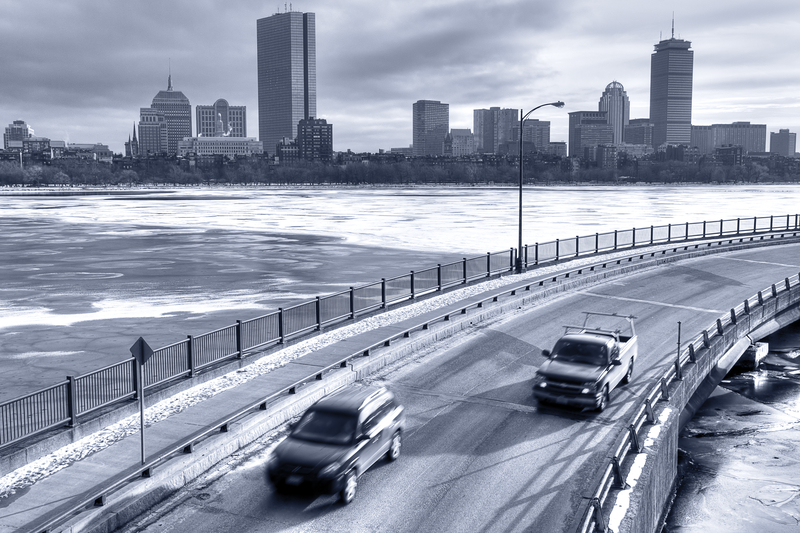
Frozen Charles River and Back Bay Boston from Memorial Drive, Cambridge.
The coldest air of the season is forecast this week for the Greater Boston area. Bursting frozen pipes are one of the most common causes of property damage during frigid weather. According to the Insurance Institute for Business and Home Safety, they can cause thousands in water damage—easily $5,000 or more, according to the Insurance Institute for Business and Home Safety (PDF).
The most at-risk pipes are those in unheated interior spaces such as basements, attics, and garages. But even pipes running through cabinets or exterior walls can freeze. The good news is that you can do some simple things to keep your water running and your house dry.
Avoiding Frozen Pipes
- Keep garage doors closed, especially if there are water supply lines in the garage.
- Open kitchen and bathroom cabinet doors to allow warmer air to circulate the plumbing, especially if your sinks are on an exterior wall. (If you have small children, be sure to remove any harmful cleaners and household chemicals.)
- Let the cold water drip from a faucet served by exposed pipes. Running water through the pipe—even at a trickle—helps prevent pipes from freezing.
- Keep the thermostat set to the same temperature day and night. But, again, during a cold snap is not the time to set back the thermostat at night to save a few bucks on your heating bill.
- If you plan to be away during cold weather, leave the heat on in your home, set to a temperature no lower than 55° F.
For the long term, add insulation to attics, basements, and crawl spaces. Insulation will maintain higher temperatures in those areas. And to prevent drafts, seal cracks and openings around windows, doors, and at sill plates, where the house rests on its foundation.
How to Thaw Frozen Pipes
- If you turn on a faucet and only a trickle comes out, you may well have a frozen pipe. “If you suspect the pipes are frozen, be careful when thawing them out because if the pipe has already burst, the water will come flowing out and flood your home,” says John Galeotafiore. He oversees Consumer Reports’ testing of home products and power gear.
- If a pipe has broken, turn off the water at the main shutoff valve, usually at the water meter or where the mainline enters the house. If the water is still running and no pipes have burst, you can take the following steps. (Of course, if you suspect a more serious problem, call a plumber.)
- Turn on the faucet. As you heat the frozen pipe and the ice plug begins to melt, you want the water to be able to flow through. Running water through the pipe, as cold as it is, will help melt ice in the pipe.
- Apply heat to the section of pipe using an electric heating pad wrapped around the pipe, an electric hair dryer, or a portable space heater (kept away from flammable materials), or by wrapping pipes with towels soaked in hot water. As tempting as it may be, do not use a blowtorch, kerosene or propane heater, a charcoal stove, or any device with an open flame; the high heat can damage the pipes or even start a fire.
- Apply heat until the full water pressure is back. Next, check all other faucets in your home to see whether you have additional frozen pipes. If one pipe freezes, others may freeze, too.
- Call a licensed plumber if you cannot locate the frozen area, if the frozen site is not accessible, or if you cannot thaw the pipe.
Space Heaters to Warm a Room - If you need supplemental heat, you can add a space heater to a room where pipes might be at risk. And though we don’t recommend using a space heater in a bathroom, if you need one, make sure it’s plugged into an outlet with a ground-fault circuit interrupter (GFCI) and do not use an extension cord.
Source of Information: Consumer Reports

